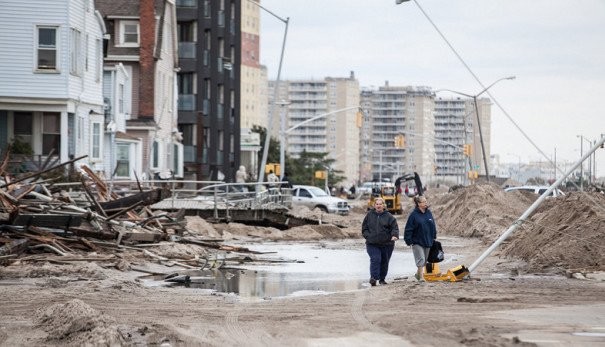Introduction
Why? Because embedded in its DNA, resilience looks at risk as a dynamic, non-linear and asymmetric phenomenon in a context where ongoing uncertainty, unpredictability, volatility, and constant change is a rude, disturbing, awakening, and sobering reality. Chaos Theory would sit well with resilience proponents. Can you say the same about Sustainability? I doubt it. Beyond the social, environmental and economic considerations that sustainability focuses on, we must also find ways and means to simultaneously address and overcome—in an integrated, holistic and systematic way—the root causes of other types of vulnerability such as those related to spiritual, psychological, political, cultural, health, scientific, technological, infrastructural, geological, anthropological, archeological, and yes even existencial cosmological issues. The title of Lean’s DevEx article is, “The need for resilience? Just about everywhere.”
Allow me to share and react to another timely article published in DevEx following an interview with reporter Lean Alfred Santos regarding my reflections on whether resilience today can ultimately become what sustainability was for development practitioners in the 20th Century. Given the “new normal” that humanity must now face globally with respect to our exposure to multiple natural, social, and socio-natural hazards and vulnerabilities, I submit resilience is clearly an increasingly more convincing concept and practice that transcends sustainability.
Story
You don’t have to just take his (or my) word for the ubiquitous application of resilient practices in the field. A very timely and relevant article in CNN’s Inside Africa titled, “The Afar: The toughest people on earth?” by Vicky Brown and Thomas Page, makes it increasingly and more evidently clear that even tribes such as the Afar—who have lived inter-generationally in remote rural desert locations below sea level and above a highly-unstable magma chamber in Djibouti—can demonstrate how sustainability alone will not result in the inherent ability for human or natural ecosystems to be resilient in very harsh and multi-hazard-ridden contexts.
Who would question the Afar tribe’s inherited, genetic, and earned (through the ongoing, unabated, and extremely harsh conditions they have been exposed to) resilience when they have proven they are—without reserve and without conditions—entitled to receive the illustrious title of “poster child” as the “toughest people on earth”. After all, the Afar Tribe actually live by the mantra: “when the going gets tough, the tough get going.” Would it be more meaningful or accurate to say the Afar are merely a “sustainable” tribe? I think not. In fact, the extremely adverse conditions the Afar have to face are actually pre-conditionsanda sine-qua-non that actually contributes towards their ability to create a truly sustainable habitat in which to “survive and thrive.” As the CNN article clarifies, “the unforgiving landscapes at the northern reaches of the Great Rift Valley their home, [actually rely] on the same extreme elements that endanger their lives.” What’s more, the article demonstrates how the Afar are turning an “arid landscape into a sustainable homeland.” Stated differently from a resilience optic, they are indelibly proving how they can “turn their scars into stars.”
Conclusion
In sum, the article alludes to the largest global concentrated solar plant being launched in the Sahara–no doubt an envious and grand “crown of achievement” for sustainability proponents. However, Geothermal appears to be a more optimal solution. As elucidated by Brown and Page in their article, “Geothermal is very important…it could [in fact] be the base load of energy for Djibouti…[However,] Solar energy (and) wind energy are temporary…geothermal is constant.” Indeed, it would seem that, all other things remaining equal–and in a world where the only constant in the Universe is change–“you can have development that’s sustainable but not resilient, but you can’t have development that’s resilient but not sustainable.”
As always, your reactions and valuable comments are greatly appreciated!
Steve Latham
Works Cited
“Chaos Theory.” Wikipedia. Wikimedia Foundation, n.d. Web. 06 Apr. 2016. https://en.wikipedia.org/wiki/Chaos_theory>.
Santos, Lean Alfred. “The Need for Resilience? Just about Everywhere.”The Need for Resilience? Just about Everywhere. DevEx, n.d. Web. 06 Apr. 2016. https://www.devex.com/news/the-need-for-resilience-just-about-everywhere-87965>.
Brown, Vi









